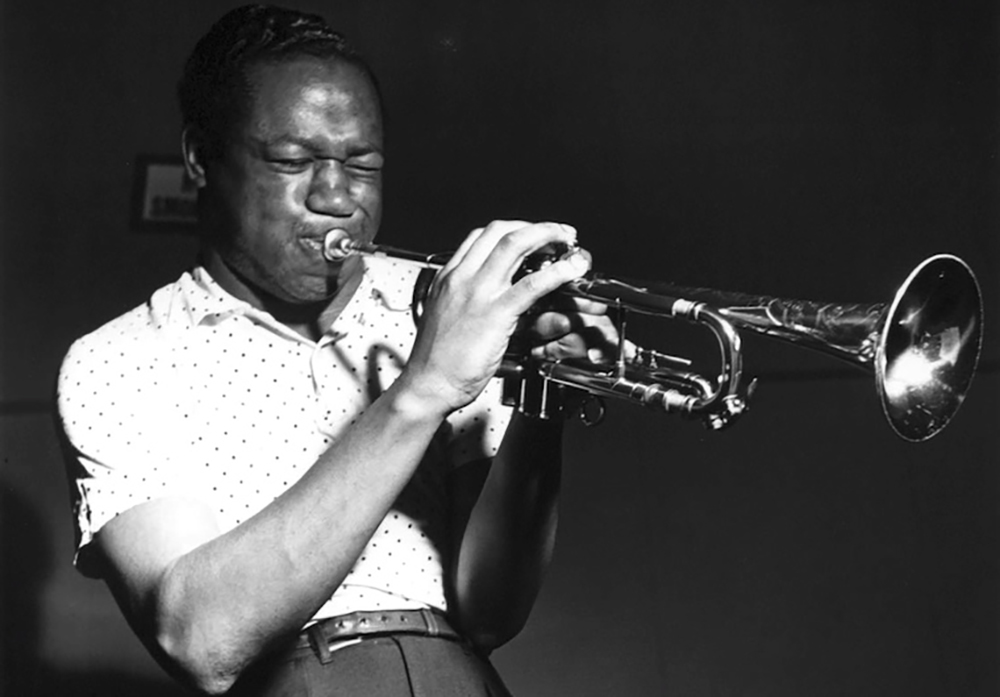By Bruce Klauber
When discussing the rich history of jazz in Atlantic City, Club Harlem is the first venue that comes to mind. And that is as it should be as this legendary club, located at 32 Kentucky Ave., presented jazz of all kinds from its opening in 1935 to its demise in the summer of 1986.
Club Harlem was unique for many reasons: The majority of the customers were white. The showroom seated 900, with a cocktail lounge that seated an additional 400. And like many other clubs back then, Club Harlem had illegal gambling within until a 1940 raid put an end to it.
The longest-running and most fondly-remembered show there was called “Larry Steele’s Smart Affairs,” which ran almost continuously from 1947 until the club ceased operations. It was an incredible floor show, featuring more than 40 acts, ranging from comics and dancers, to singers and novelty acts. White celebrities, including Frank Sinatra and Milton Berle, often visited in the late hours, and some patrons remember them getting up on stage and performing.

As a jazz venue, almost every important singer and player passed through Club Harlem, including Count Basie, Duke Ellington, Sarah Vaughan, Billy Eckstine, Louis Armstrong, Nat “King” Cole, Dinah Washington and Wild Bill Davis. In later years, Club Harlem played host to more contemporary rhythm and blues acts including Ray Charles, Aretha Franklin and Marvin Gaye.
Grace’s Little Belmont however, located across the street from Club Harlem, was a jazz club and only a jazz club – from its inception in the mid-1930s until it closed circa 1975. The Belmont was an “organ” room, meaning that many of its jazz headliners through the years were organ players who performed on the “house” Hammond B-3 instrument. One of the reasons jazz organists loved the place was that they didn’t have to haul the hefty organ and heftier Leslie speakers in and out of it.
Organist Wild Bill Davis was a fixture at the club from the mid-1940s on, playing with his own trio and backing visiting guests. Duke Ellington’s famed alto saxophonist Johnny Hodges began dropping in to the club to sit in with Wild Bill, beginning in the late 1940s. It became a summer tradition for the two of them. In 1966, the pair made two albums for the RCA label recorded live at Grace’s Little Belmont.
Another regular at Grace’s was the innovative organist and pianist Milt Buckner, Lionel Hampton’s chief arranger and sometimes composer, who worked there on and off for years. For those who don’t know the work of this unsung giant, Milt Buckner invented the “locked hands” technique of jazz piano-playing, copied and popularized by George Shearing. By way of this method of playing – using all 10 fingers simultaneously to fashion “block chords” – a keyboard could almost sound like a full orchestra.
I had the good fortune of playing drums with Buckner in the Philadelphia area for three years, on and off, in the 1970s, and he spoke of Grace’s often.

Buckner loved to tell the story of the relatively untrained drummer Sam Woodyard, who joined Buckner at Grace’s in the early 1950s. In that Buckner was able to make Grace’s Hammond B-3 organ sound like a full big band, Woodyard got on-the-job training in just how the drums should be played in a big band. The lessons that Woodyard learned at Grace’s led him to confidently audition for Duke Ellington’s big band.
He learned his lessons well. Sam Woodyard joined Ellington in 1955 and stayed until 1966. Everyone who played with Milt Buckner learned from him. I sure did.
Buckner loved to tell the story of who the bartender was at Grace’s Little Belmont: A retired dancer named Elvera M. “Baby” Sanchez, who also just happened to be the mother of Sammy Davis, Jr. Sammy visited Grace’s often.
Clubs like Grace’s and the Club Harlem mosty featured jazz performers whose roots were firmly in the swing era. There were exceptions. The late and legendary jazz guitarist, Pat Martino, worked many summers at Club Harlem, and Grace’s booked some more modern players from time to time. But other nightspots, specifically the Wonder Bar on Arctic Avenue, booked the top modern jazz organists such as Jimmy Smith, Larry Young, Groove Holmes and Jimmy McGriff. Dizzy Gillespie and Art Blakey worked there as well before the Wonder Bar changed their policy and booked name rhythm and blues acts well into the 1990s.
Before it merged with Club Harlem in 1954, Club Paradise, on North Illinois Avenue, presented floor shows and swing era headliners like the Count Basie big band. Club Paradise made the jazz history books by way of the early 1950s residency of the ground-breaking composer, arranger and pianist Tadd Dameron. During the summer of 1953, Dameron led the show band at the Paradise which featured, among others, iconic jazz saxophonist and composer Benny Golson, and the legendary trumpeter, Clifford Brown.
That summer was transformative for Brown, one of the most brilliant trumpeters in jazz history. Don Glanden, producer/writer of the definitive film biography on Brown, “Brownie Speaks,” and head of University of the Arts’ Jazz Studies Department, meticulously documented how important that summer was to Brown’s career.
“The band at the Paradise began to fall apart about three weeks into the season,” Glanden recalls. “Drummer Philly Joe Jones was busted for drugs and leader Tadd Dameron, who also had drug issues, got nervous. Still, Quincy Jones, who got the word about how great Brown was, came up from Wildwood where he had been playing with Lionel Hampton, and convinced Hamp to hire Brown for a fall tour of Europe. And it was in that summer of 1953 when Brown made his first certifiable jazz recordings.”
By 1956, via his tenure in the group of jazz drummer Max Roach, Clifford Brown became one of the biggest names in jazz. Sadly, Clifford Brown’s life was cut short when he died in a car accident on the Pennsylvania Turnpike on June 26, 1956.
And what of jazz in Atlantic City today? For the past 12 years or so, Atlantic City’s Chicken Bone Beach Foundation has dedicated itself, according to its mission statement, to “turning the memory of an unfortunate chapter of American history into a positive force of good through jazz.”
“Chicken Bone Beach” was the name given to a stretch of beach around Missouri Avenue that was segregated from 1900 until the passage of the Civil Rights Act in 1964. Among other things, the foundation presents jazz concerts featuring name headliners throughout Atlantic City, sponsors tuition-free jazz camps for Atlantic City children, and does everything possible to honor and preserve the rich history of jazz in Atlantic City.
Further, there is now an annual Atlantic City Jazz Festival. Clubs like Kelsey’s in Atlantic City, Bocca in Margate and Gregory’s in Somers Point book jazz frequently; the Cape May and Exit Zero festivals regularly get national recognition, and since 2004, the South Jersey Jazz Society has worked tirelessly to promote jazz all over the Jersey Shore, most recently in a stellar concert at Somers Point’s Gateway Theater.
The jazz scene here is thriving, healthy, and growing, the Jersey Shore continues to be the home of the greatest jazz musicians anywhere.
And they still swing like the devil!
Bruce Klauber is the author of four books, an award-winning music journalist, concert and record producer and publicist, producer of the Warner Brothers and Hudson Music “Jazz Legends” film series, and a working jazz drummer and vocalist since childhood. He served as Technical Adviser on the Oscar-winning film, “Whiplash,” and on the 2018 Mickey Rourke film, “Tiger.” He has been honored by Combs College of Music and Drexel University for his “contributions to music journalism and jazz performance.”










